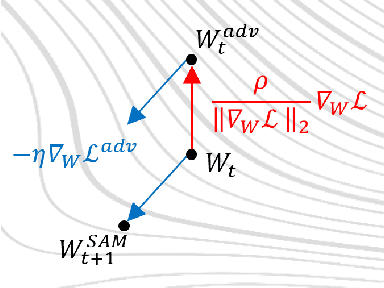Carl De Sousa Trias
WaterMAS: Sharpness-Aware Maximization for Neural Network Watermarking
Sep 05, 2024



Abstract:Nowadays, deep neural networks are used for solving complex tasks in several critical applications and protecting both their integrity and intellectual property rights (IPR) has become of utmost importance. To this end, we advance WaterMAS, a substitutive, white-box neural network watermarking method that improves the trade-off among robustness, imperceptibility, and computational complexity, while making provisions for increased data payload and security. WasterMAS insertion keeps unchanged the watermarked weights while sharpening their underlying gradient space. The robustness is thus ensured by limiting the attack's strength: even small alterations of the watermarked weights would impact the model's performance. The imperceptibility is ensured by inserting the watermark during the training process. The relationship among the WaterMAS data payload, imperceptibility, and robustness properties is discussed. The secret key is represented by the positions of the weights conveying the watermark, randomly chosen through multiple layers of the model. The security is evaluated by investigating the case in which an attacker would intercept the key. The experimental validations consider 5 models and 2 tasks (VGG16, ResNet18, MobileNetV3, SwinT for CIFAR10 image classification, and DeepLabV3 for Cityscapes image segmentation) as well as 4 types of attacks (Gaussian noise addition, pruning, fine-tuning, and quantization). The code will be released open-source upon acceptance of the article.
Find the Lady: Permutation and Re-Synchronization of Deep Neural Networks
Dec 19, 2023



Abstract:Deep neural networks are characterized by multiple symmetrical, equi-loss solutions that are redundant. Thus, the order of neurons in a layer and feature maps can be given arbitrary permutations, without affecting (or minimally affecting) their output. If we shuffle these neurons, or if we apply to them some perturbations (like fine-tuning) can we put them back in the original order i.e. re-synchronize? Is there a possible corruption threat? Answering these questions is important for applications like neural network white-box watermarking for ownership tracking and integrity verification. We advance a method to re-synchronize the order of permuted neurons. Our method is also effective if neurons are further altered by parameter pruning, quantization, and fine-tuning, showing robustness to integrity attacks. Additionally, we provide theoretical and practical evidence for the usual means to corrupt the integrity of the model, resulting in a solution to counter it. We test our approach on popular computer vision datasets and models, and we illustrate the threat and our countermeasure on a popular white-box watermarking method.
 Add to Chrome
Add to Chrome Add to Firefox
Add to Firefox Add to Edge
Add to Edge